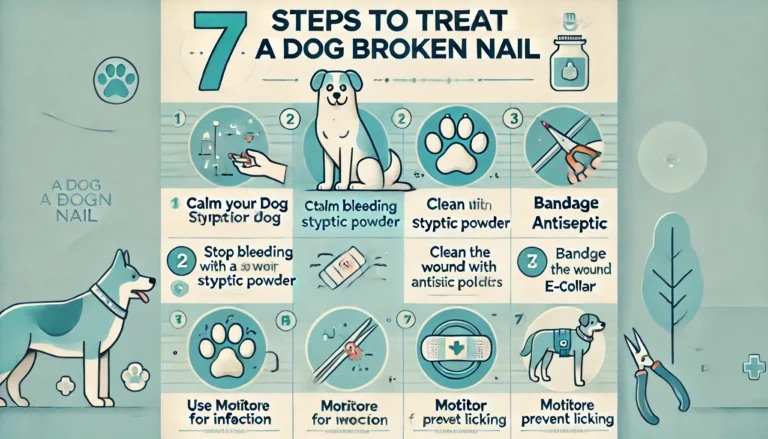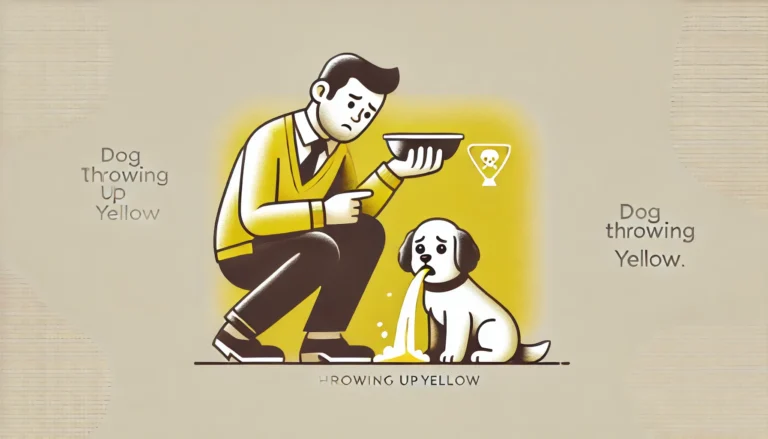How Cold Is Too Cold for Your Dog?

you must need to know about Cold for Your Dog
Cold for Your Dog, As winter rolls in, many dog owners find themselves asking a vital question: how cold is too Cold for Your Dog? It’s crucial to recognize that dogs, like people, have different tolerances for cold weather based on various factors, including breed, size, age, and overall health. Understanding these elements is essential for keeping our furry friends safe and comfortable during chilly months. In this comprehensive guide, we’ll dive into the effects of cold weather on dogs, identify the signs that your pup may be too cold, and provide tips to ensure their safety and comfort.
Understanding Canine Cold Tolerance
When we talk about how cold is too Cold for Your Dog, we first need to consider the characteristics of different breeds. Some dogs are bred for cold climates, while others are more suited for warmer environments. Here’s a closer look:
1. Breed Characteristics
- Cold-weather Breeds: Breeds like Huskies, Alaskan Malamutes, and Saint Bernards have thick, double coats that help insulate them against low temperatures. These breeds can typically handle colder conditions better than short-haired breeds.
- Short-haired Breeds: Dogs such as Chihuahuas, Boxers, and Dalmatians are more vulnerable to cold. As a result, understanding what temperature is too Cold for Your Dog, especially for these breeds, is crucial.
2. Size and Weight
- Small Dogs: Smaller dogs generally lose body heat faster than larger breeds. This makes them more susceptible to cold weather, particularly in temperatures that dip below 32°F (0°C). If you’re wondering, “do dogs get cold?” the answer is yes, especially smaller ones.
- Large Dogs: Larger dogs often handle cold better, particularly if they have thick fur. However, even large dogs can feel the effects of extreme cold, especially when they are wet or after a grooming session.

3. Age and Health
- Puppies and Seniors: Young puppies and older dogs may struggle in cold temperatures. Puppies haven’t built up the insulating fat that adult dogs have, while senior dogs may have health issues that affect their ability to regulate body temperature.
- Health Issues: Dogs with certain medical conditions, such as arthritis or heart problems, can be more sensitive to cold. Always monitor these dogs closely during winter months to determine how cold is too cold for them.
Recognizing the Signs of Cold Stress
It’s important to keep an eye on your dog during cold weather. Here are some signs that your dog might be too cold Cold for Your Dog.
1. Shivering
If your dog is shivering, it’s a clear indication they are too cold. Shivering is the body’s way of generating heat, so take it as a sign that your dog needs to warm up.
2. Whining or Barking
Increased vocalization can signal discomfort. If your dog is whining or acting anxious, they might be trying to tell you that they are feeling the cold and it’s too Cold for Your Dog.
3. Hunched Posture
Dogs often hunch their bodies or tuck their tails between their legs when they are cold. This position helps them conserve body heat, but it’s also a sign that they are uncomfortable.
4. Lifting Paws
If your dog frequently lifts their paws off the ground during walks, it could mean that their paws are cold, signaling a desire to go back inside.
do you know
Diabetes in Cats mellitus, commonly referred to as diabetes, is a significant medical condition that affects cats worldwide. Characterized by the inability of the pancreas to produce sufficient insulin or the body’s inability to utilize the insulin properly, diabetes in cats can lead to a host of complications if left untreated.
5. Reluctance to Walk or Play
If your dog, usually energetic and eager for outdoor fun, suddenly hesitates to go outside, it may indicate that the cold is affecting them.
6. Frostbite and Hypothermia
In severe cold, frostbite can occur, particularly on exposed areas like ears, tails, and paws. Hypothermia is a serious condition that can develop with prolonged exposure to the cold, with symptoms including lethargy, shallow breathing, and unresponsiveness.
Temperature Guidelines for Dogs
To help determine what temperature is too cold for dogs, here’s a general breakdown of guidelines:
Above 50°F (10°C)
Most dogs will be comfortable in these temperatures. However, short-haired or small breeds may still feel chilly and benefit from a light jacket.
32°F to 50°F (0°C to 10°C)
This range starts to require extra caution. While many dogs can handle these temperatures for short periods, small breeds and those with thin coats should wear a coat or sweater.
20°F to 32°F (-6°C to 0°C)
Dogs in this temperature range may become uncomfortable, especially if they are outside for extended periods. Short-haired breeds should definitely wear coats, and all dogs should have limited outdoor time.
Below 20°F (-6°C)
Dogs are at a higher risk for cold stress and hypothermia at these temperatures. If the temperature drops below this mark, limit outdoor time and ensure your dog is warm and dry.
Below 10°F (-12°C)
This is a critical temperature range. Many dogs, particularly small and thin-coated breeds, should not be outside for more than a few minutes. Prolonged exposure can lead to severe health risks.
Keeping Your Dog Warm
To ensure your dog stays warm during the cold months, consider the following tips:
1. Invest in Quality Gear
A well-fitting dog coat or sweater can provide essential warmth. Look for materials that offer insulation and water resistance, especially if your dog will be outside in wet conditions. Don’t forget booties to protect your dog’s paws from ice and salt, which can cause irritation.
2. Limit Time Outdoors
Keep outdoor walks short and monitor how your dog is responding to the cold. If you notice signs of discomfort, it’s best to head back inside. Use a dog walk temperature chart to help you gauge how long you can safely be outside.
3. Create a Cozy Indoor Space
Make sure your dog has a warm, comfortable place to rest indoors. Provide a cozy bed with blankets and keep them away from drafty areas. An air-conditioned dog house or insulated dog house can be a great option for outdoor dogs during the colder months.
4. Monitor Older and Ill Dogs
Pay extra attention to older dogs or those with health issues. They may require additional warmth and shorter outdoor times. Remember, what’s too cold for dogs in general may not apply to these sensitive pups.
5. Consider Dog-friendly Heating Pads
If your dog enjoys lounging in one spot, consider a dog-friendly heating pad to keep them warm while they relax, especially in insulated dog houses for winter.
6. Hydration and Nutrition
Ensure your dog stays hydrated, as dehydration can occur even in winter. Maintain a balanced diet to help them generate body heat.
When to Seek Veterinary Help
If you suspect your dog is suffering from cold-related issues, don’t hesitate to contact your veterinarian. Some signs that warrant a veterinary visit include:
- Persistent Shivering: If your dog is shivering even after coming indoors and warming up, it could be a sign of hypothermia.
- Paw Injuries: If you notice cracked pads or signs of frostbite, seek veterinary care immediately.
- Lethargy: If your dog appears unusually tired, unresponsive, or has difficulty moving, it may require urgent medical attention.
Special Considerations for Different Breeds
Certain breeds have unique tolerances for cold weather. Here are some breed-specific considerations:
- Labradors and German Shepherds: These breeds have good cold weather tolerances, but it’s important to know that they can still get cold, especially if wet. Is 20 degrees too cold for a German Shepherd? It might be manageable, but they should have a warm shelter available.
- Huskies: Huskies are naturally suited to cold weather and can typically handle lower temperatures well. However, how cold is too cold for Huskies? If they start showing signs of discomfort, it’s essential to bring them inside.
- Puppies and Small Breeds: Puppies and small breeds have a harder time with cold. Do puppies get cold outside? Yes, and they should be monitored closely to ensure they’re not left in the cold too long.
Conclusion
Understanding how cold is too Cold for Your Dog is essential for their health and well-being during winter. By considering your dog’s breed, size, and health status, you can make informed decisions about their outdoor time in chilly weather. Always pay attention to their body language and behavior to ensure they’re comfortable. With the right precautions, you can help your furry friend enjoy the winter months safely and happily. Remember, a little extra care goes a long way in keeping your dog warm and healthy throughout the colder season.
What are the effects of cold in dogs?
Cold weather can significantly affect dogs, leading to conditions such as hypothermia and frostbite, especially in small or short-haired breeds. They may exhibit signs of discomfort, including shivering, lethargy, and reluctance to go outside. Prolonged exposure can exacerbate existing health issues and affect their overall well-being.
How cold is too Cold for Your Dog?
Above 50°F (10°C): Comfortable for most dogs.
32°F to 50°F (0°C to 10°C): Use caution; short-haired breeds may need coats.
20°F to 32°F (-6°C to 0°C): Limit outdoor time; all dogs should wear jackets.
Below 20°F (-6°C): High risk for cold stress; minimize exposure significantly.
Can I give my cold to my dog?
No, the common cold in humans cannot be transmitted to dogs, as it is caused by different viruses. However, dogs can develop their own illnesses, like kennel cough or canine flu. To keep your dog healthy, maintain good hygiene and avoid close contact while you are sick to minimize any potential stress or exposure.
What to do if your dog gets too cold?
If your dog becomes too cold, immediately bring them indoors to a warm environment. Wrap them in a warm blanket and offer a warm drink. Monitor for signs of hypothermia such as shivering or lethargy. If symptoms persist, consult your veterinarian for guidance and treatment options to ensure your dog’s health.
Does the cold affect dogs?
Yes, cold weather can significantly affect dogs, particularly those with short coats or existing health issues. Symptoms of cold stress include shivering, reluctance to go outside, and lethargy. It’s essential to monitor your dog’s behavior closely and provide adequate warmth during colder temperatures to ensure their comfort.
How do I cure my dogs cold?
To help your dog recover from a cold, ensure they have a warm, comfortable resting space and access to fresh water. A nutritious diet supports their immune system. If your dog shows persistent symptoms like coughing or nasal discharge, consult your veterinarian for advice on treatment options tailored to their condition.
How do I tell if my dog is cold?
You can tell if your dog is cold by observing signs such as shivering, lifting their paws off the ground, whining, or hunching their body. They may also seek warmth, refuse to go outside, or exhibit anxious behaviors. If you notice these signs, it’s time to provide extra warmth and comfort for your furry friend.
Do dogs get cold at night?
Yes, dogs can feel cold at night, especially if they sleep outdoors or in unheated areas. Providing warm bedding is essential, as well as ensuring they have a cozy spot indoors. During colder months, it’s vital to create a comfortable sleeping environment for your dog to keep them warm and safe while resting.
How cold is good for dogs?
Temperatures around 50°F (10°C) are generally suitable for most dogs, but individual preferences can vary based on breed, size, and health. Larger breeds with thick fur may enjoy cooler weather, while smaller or short-haired dogs may require warmth. Always monitor your dog’s comfort level in varying conditions to ensure their well-being.






